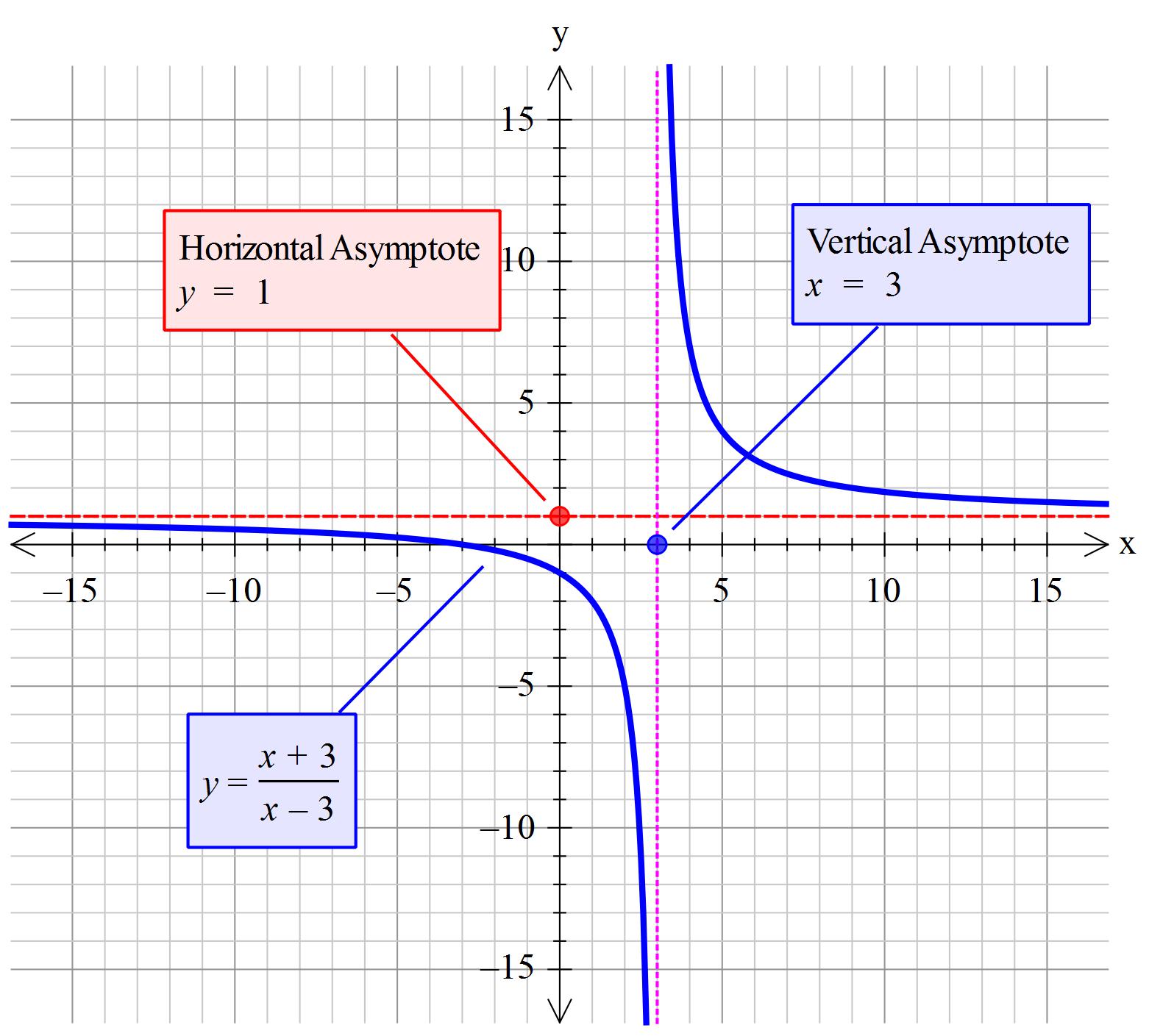
The equation becomes undefined at #x=3# in the denominator as #3-3=0#. Basically this means that mathematically you are not allowed to divide by 0.
#color(blue)("Vertical asymptotes")#
#lim_(xto3^(+))(x+3)/(x-3) -> (x+3)/(0^+)=+oo #
#lim_(Xto3^-)(x+3)/(x-3)-> (x+3)/(0^-)=-oo#
,~~~~~~~~~~~~~~~~~~~~~~~~~~~~~~~~~~~~~~~
#color(blue)("Horizontal asymptotes")#
As #x# becomes bigger and bigger then the addition or subtraction of 3 becomes insignificant. Consequently we end up with basically #x/x#
#lim_(xtooo^+) (x+3)/(x-3) ->(+oo)/(+oo) = +1#
#lim_(xtooo^-) (x+3)/(x-3)->(-oo)/(-oo) = +1#
So the horizontal asymptote is +1
'~~~~~~~~~~~~~~~~~~~~~~~~~~~~~~~~~~~~
Check: using polynomial division.
#(x+3)-:(x-3) = 1+6/(x-3)#
#lim_(x->3^(+-) ) = 1+-oo#
#lim_(x->oo^(+-) ) = 1+-0=1#


